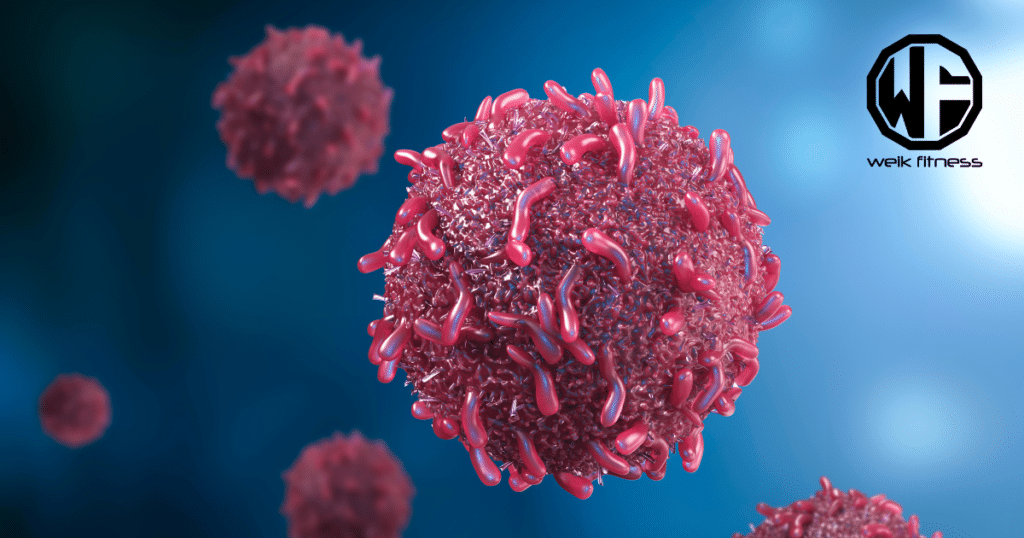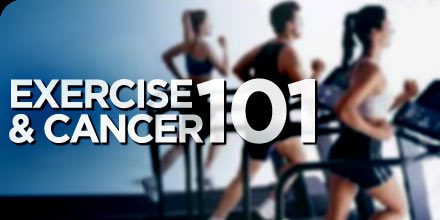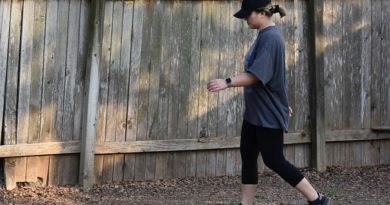Exercise and Cancer 101: Is There a Relationship?
Most people in the United States struggle to make time for exercise. As a certified strength and conditioning coach with over two decades of experience, I’ve seen how physical activity dramatically improves quality of life. And now, there is a lot of research being done on exercise and cancer.
We know exercise is good for us, but what about its role in fighting cancer? Can a consistent fitness routine truly help prevent this disease?
Heart disease, cancer, and stroke are three of the top killers in the United States. In this guide, I want to focus specifically on the powerful relationship between exercise and cancer.
Cancer can be influenced by your lifestyle, environment, and genetics. The breakdown of how these factors contribute to cancer deaths is eye-opening.
- Lifestyle – 53%
- Environment – 21%
- Heredity – 16%
Since lifestyle is the single biggest factor, you have a significant amount of control. This makes it vital to understand how exercise can reduce your cancer risk.
Cancer often develops over time due to behaviors established early in life. This is why building healthy habits now is so important for your long-term well-being.
Disclaimer: This article is for informational purposes only and is not meant to treat or diagnose any condition. It is recommended that you speak with your doctor before starting any exercise program, changing your daily nutrition, or adding any supplements to your regimen.
Table of contents

What is Cancer?
So, how does cancer actually develop? It starts when the normal process of cell division goes wrong.
Healthy genes regulate cell division, ensuring new cells are perfect copies that replace old or damaged ones. Cancer begins with mutations in these genes, which allows abnormal cells to divide without stopping.
This mass of abnormal cells forms a malignant tumor. A gene that can cause this to happen is called an oncogene.
Exercise helps on a cellular level by reducing chronic inflammation and improving your immune system function. A stronger immune system is better at finding and destroying cancerous cells before they can multiply.
Risk Factors

Your daily choices directly impact your cancer risk. Things like smoking or using tanning booths significantly increase your chances.
Environmental factors also play a role, including exposure to sun, pollution, and secondhand smoke. And of course, a family history of cancer can increase your genetic risk.
A major risk factor we can control is physical inactivity. With more people working sedentary desk jobs, moving our bodies is more important than ever.
The American Cancer Society reports that regular physical activity is linked to a lower risk of several types of cancer. These include breast, colon, prostate, kidney, and lung cancer.
How does exercise work its magic? It helps by regulating hormones like estrogen and insulin, which can fuel cancer growth at high levels. It also speeds up digestion, which may reduce the time your colon is exposed to potential carcinogens.
Exercise and Cancer Preventative Activities

You don’t need to run a marathon to get the cancer-fighting benefits of exercise. Small changes can make a big difference.
Integrating more movement into your daily life is a great start. This includes simple swaps like taking the stairs instead of the elevator or walking instead of driving for short trips.
- Walking instead of driving
- Raking leaves
- Gardening
- Taking the stairs instead of the elevator
- Cleaning the house
- Mowing the lawn
To really maximize the benefits, you should include dedicated workouts in your routine. The American Cancer Society recommends that adults get 150-300 minutes of moderate-intensity or 75-150 minutes of vigorous-intensity activity each week.
Moderate-intensity activities include brisk walking, dancing, or swimming. Vigorous exercises include jogging, cycling, or playing tennis.
In my experience, consistency is everything. Finding activities you truly enjoy is the key to sticking with it for the long haul.
Exercise and Cancer: What Form of Exercise is Best for You?

The best exercise is the one you’ll actually do. If you hate running, forcing yourself to jog every day will likely lead to burnout.
It’s a well-known fact that over half of new exercisers quit within six months. This often happens because they choose activities they don’t enjoy.
A pro-tip I always share with clients is to create a balanced routine. Combine cardiovascular exercises like cycling with strength training at least two days per week, as recommended by the American College of Sports Medicine (ACSM).
Exercising with a friend or family member is a great way to stay motivated and accountable. You can push each other and celebrate your progress together.
Set realistic goals you can strive for and achieve. A healthy diet and an active lifestyle are crucial for promoting a long, high-quality life.
Diet Along with Exercise
Exercise and diet go hand-in-hand for cancer prevention. You can’t out-train a poor diet.
Many modern foods are high in unhealthy fats and processed sugars. While convenient, fast food often lacks the nutrients your body needs to thrive.
As Dennis Savaiano, former Dean of Purdue University’s School of Consumer and Family Sciences, recommended, focus on eating plenty of fruits, vegetables, grains, and legumes. He also stressed that the benefits of eating produce far outweigh potential risks from pesticides.
The American Cancer Society suggests a diet rich in plant-based foods. Nutrients like antioxidants and phytochemicals found in colorful fruits and vegetables help protect your cells from damage.
Make sure your meals are balanced with lean protein, healthy fats, and complex carbohydrates. Protein sources like fish, poultry, beans, and nuts help repair muscle tissue after workouts.
Healthy fats, such as the omega-3 fatty acids in salmon and monounsaturated fats in avocados, are linked to a reduced risk of heart disease and possibly cancer. Complex carbs from whole grains and vegetables provide sustained energy for your workouts and daily life.
Obesity and Exercise
Obesity is a major risk factor for many cancers in the United States. According to the CDC, adult obesity prevalence is over 40% in many states, a significant increase from past decades.
Excess body fat can lead to chronic inflammation and increased levels of certain hormones that promote cancer growth. Cancers strongly linked to obesity include colorectal, postmenopausal breast, uterine, esophageal, kidney, and pancreatic cancers.
Exercise is one of the most effective tools for maintaining a healthy weight. By burning calories and building metabolically active muscle, you can significantly diminish your chances of developing these forms of cancer.
Exercise and Cancer: The Correlation
The evidence is clear, regular exercise is a powerful way to lower your risk for numerous types of cancer. By scheduling time for physical activity, you are investing in a longer, healthier life.
The benefits extend far beyond cancer prevention. A consistent fitness routine will also:
- Lower stress levels
- Increase flexibility
- Help you feel better about yourself
- Improve your physical appearance
You will gain a feeling of accomplishment from knowing you’ve made the best possible choices for yourself and your family. Your health is your most valuable asset.
Frequently Asked Questions
How much exercise is enough to reduce cancer risk?
The American Cancer Society recommends 150-300 minutes of moderate-intensity or 75-150 minutes of vigorous-intensity exercise per week. Combining this with at least two days of strength training provides the most benefit.
Can I exercise if I’m undergoing cancer treatment?
Yes, for most people. Exercise is generally safe and highly recommended during and after cancer treatment. Research from the American College of Sports Medicine shows it can help manage side effects like fatigue and improve your overall quality of life. Always consult your doctor before starting any new exercise program.
What’s more important for cancer prevention, diet or exercise?
Both are incredibly important and work together. You can’t have one without the other for optimal health. A balanced, plant-forward diet provides the nutrients to protect your cells, while exercise helps maintain a healthy weight and boosts your immune system.
Does strength training help prevent cancer?
Absolutely. Building muscle mass improves your metabolism and helps control blood sugar levels, both of which are important for cancer risk reduction. The recommendation is to include strength training for all major muscle groups at least twice a week.





